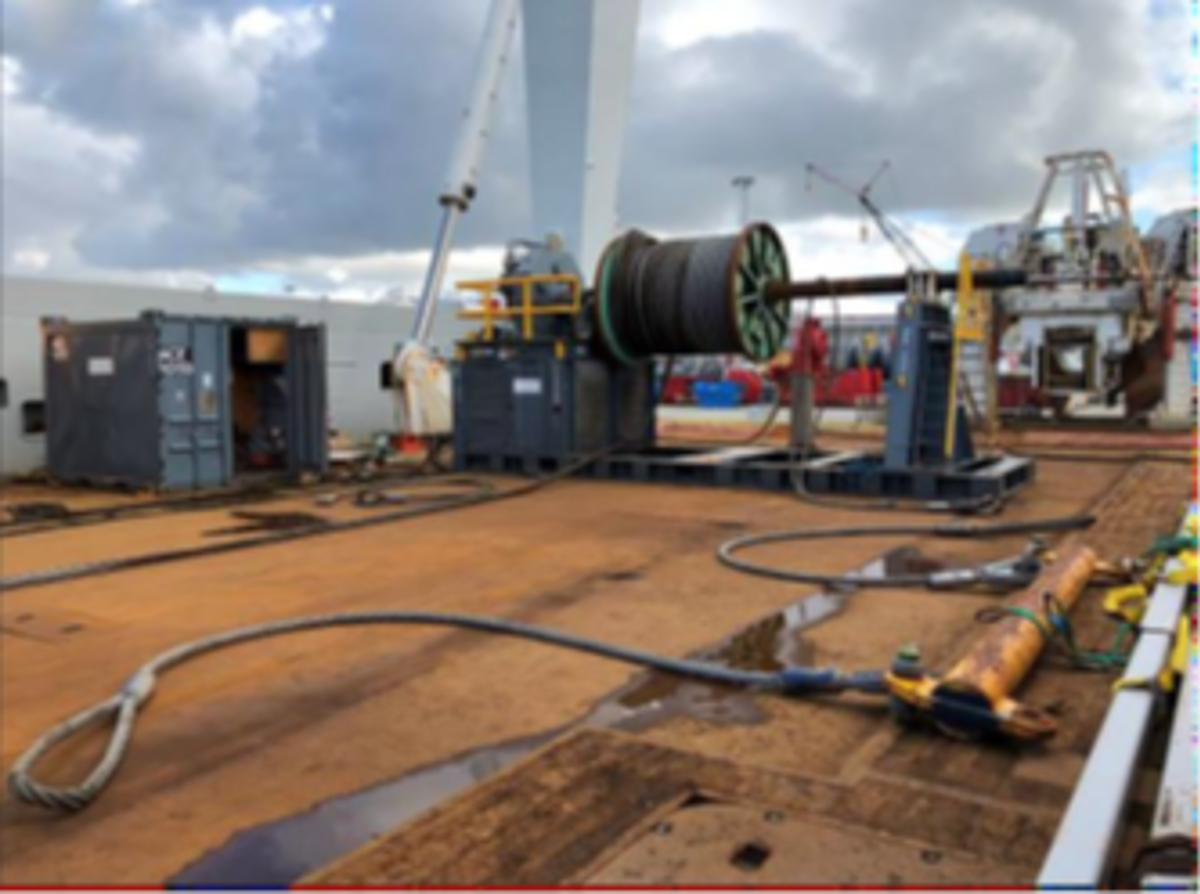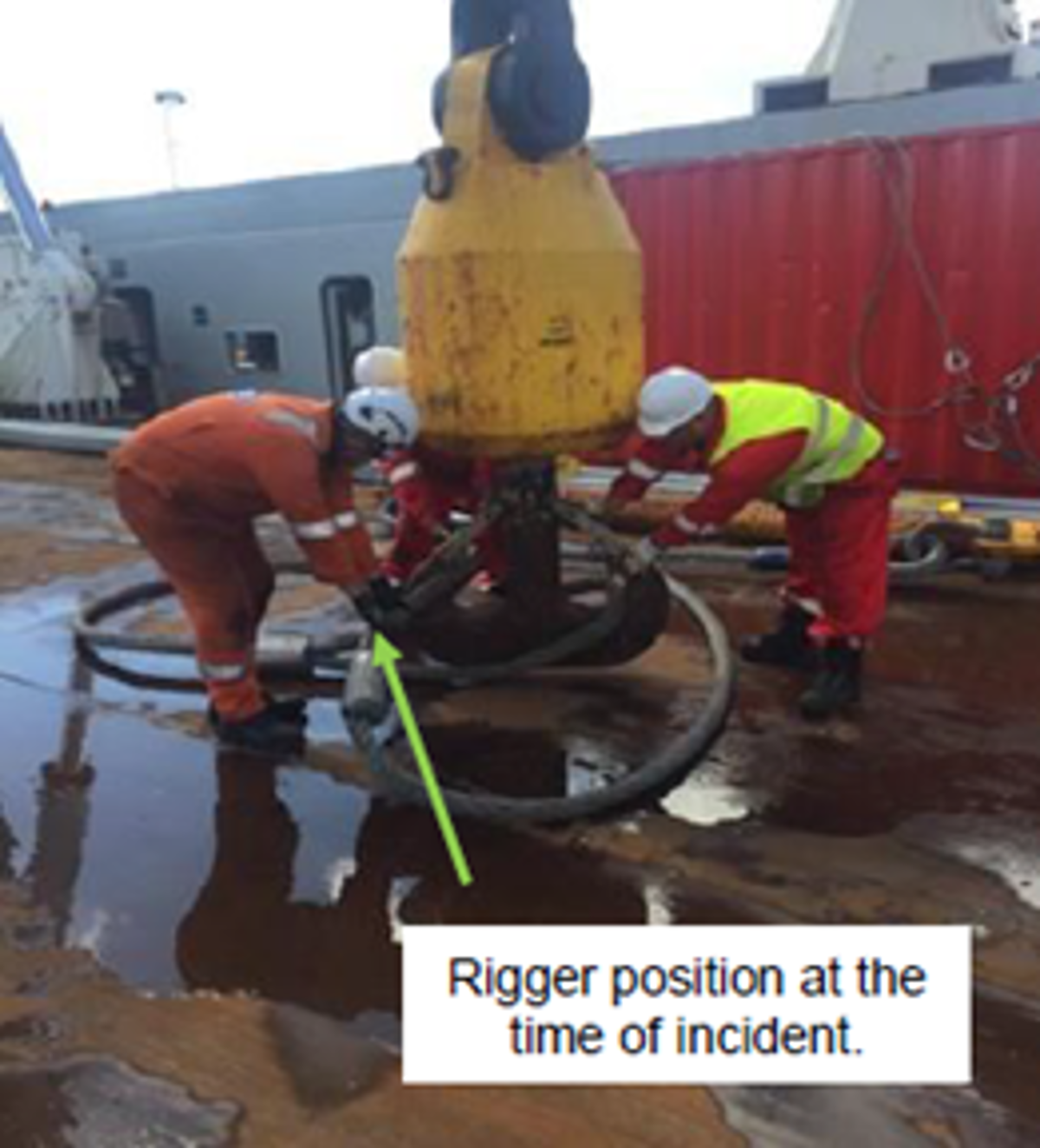Serious injury incurred while removing wire rope sling from a crane hook
- Safety Flash
- Published on 10 November 2020
- Generated on 18 December 2025
- IMCA SF 31/20
- 2 minute read
Jump to:
What happened?
A rigger sustained a fractured shoulder whilst removing a large diameter wire rope sling soft eye from the crane hook.
During vessel mobilisation of deck equipment, crew were lifting a wire drum onto a spooling winch. After landing the wire drum onto the spooler, deck crew landed the spreader beam onto the deck and started disconnection of both spreader beam wire rope slings from the crane hook.
The crane hook was positioned at waist height to assist with manual handling.
The first wire rope sling was disconnected without incident. On attempting to remove the second wire rope sling, it rapidly rose up and struck the rigger on his right shoulder forcing him backwards and causing him to fall to the deck, causing a serious injury to his shoulder.
Findings
- There was no Task Risk Assessment and Toolbox Talk for what was a non-routine lift.
- The crane hook was at waist height and kept in proximity to the spreader beam to assist manual handling; this introduced a bend in the wire rope sling with possible torsion which introduced an unknown amount of stored energy.
- During the task, the rigger acknowledged the advice from the Deck Foreman to watch out for stored energy but did not appreciate the potential risk from this and continued working.
Actions taken? Lessons learned?
- Raise awareness of the critical need for a time out before starting non-routine activities.
- Ensure that Task Risk Assessments and Toolbox Talks include everyone involved in the lifting operation and that they are fully aware of the inherent risks.
- Whilst removing wire rope slings from crane hooks, it is recognised that there will be many different situations. In most cases, however, the crane hook should be landed on the deck before disconnecting the slings.
- Reinforce with riggers and personnel involved in lifting operations the need to remain aware of the potential hazard of stored energy in large steel wire rope slings when disconnecting them from the crane hook and during general wire rope handling activities.
Members may also wish to refer to
- IMCA HSS019 Guidelines for lifting operations
- IMCA Safety Information: Line of fire (‘Be prepared to work safely’ video); In the line of fire (IMCA HSS036, classic safety video)
Related Safety Flashes
-
IMCA SF 24/18
30 October 2018
-
-
IMCA SF 18/13
20 December 2013
-
IMCA SF 11/02
2 December 2002
IMCA Safety Flashes summarise key safety matters and incidents, allowing lessons to be more easily learnt for the benefit of the entire offshore industry.
The effectiveness of the IMCA Safety Flash system depends on the industry sharing information and so avoiding repeat incidents. Incidents are classified according to IOGP's Life Saving Rules.
All information is anonymised or sanitised, as appropriate, and warnings for graphic content included where possible.
IMCA makes every effort to ensure both the accuracy and reliability of the information shared, but is not be liable for any guidance and/or recommendation and/or statement herein contained.
The information contained in this document does not fulfil or replace any individual's or Member's legal, regulatory or other duties or obligations in respect of their operations. Individuals and Members remain solely responsible for the safe, lawful and proper conduct of their operations.
Share your safety incidents with IMCA online. Sign-up to receive Safety Flashes straight to your email.

